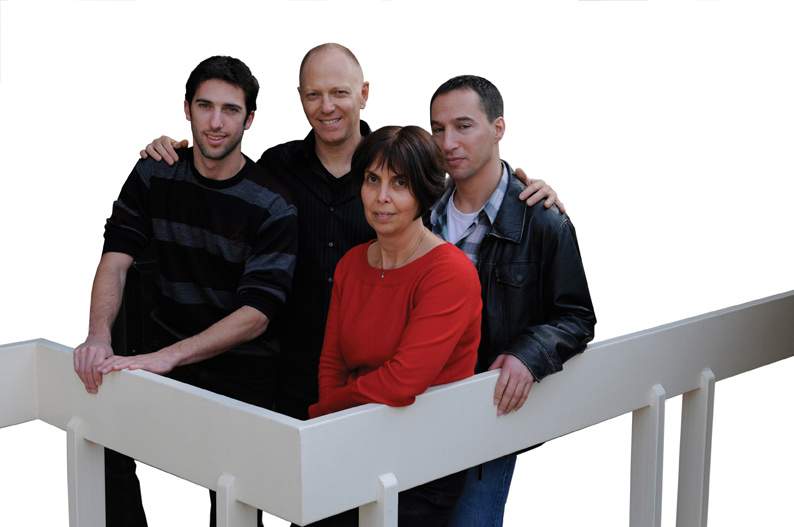Are you a journalist? Please sign up here for our press releases
Subscribe to our monthly newsletter:

An observer in a busy train station will soon notice that the crowd is denser near ticket counters, kiosks and platforms. No walls separate the different activities, but each nevertheless occupies a distinct compartment within the space. Weizmann Institute scientists have now applied a similar principle to genes, packing them together in small areas on a chip. In the process, they are revealing the ways in which such “crowd management” might help to control the activities of genes in cells. Their method could not only provide new tools to realistically manipulate genes in lab experiments; it might prove to be an essential step in the quest to create artificial cells.
Gene activity in biological organisms takes place in the cramped quarters of the cell or, if the organism is not a bacterium, in the tight space of the cell nucleus. And recent evidence has suggested that within the jam-packed nucleus some of those activities are segregated into distinct areas. Yet lab experiments with genes typically use strands of DNA and various other molecules floating loosely in solution. Prof. Roy Bar-Ziv of the Institute’s Materials and Interfaces Department in the Faculty of Chemistry wanted to create a system that would combine the convenience of the test tube with the crowded conditions in a cell. Together with then doctoral student Amnon Buxboim, he developed a method for attaching fairly long strands of DNA perpendicularly onto a surface to create a thick, brush-like carpet. With the aid of a photo-lithography technique borrowed from microelectronics, they managed to control the density so precisely that they were able to create highly detailed, nanosized “photographs” printed in DNA.
Once they had perfected the technique, Bar-Ziv, Buxboim, research student Dan Bracha and Dr. Shirley Daube, who directs the Institute’s Chemical and Biophysical NanoSciences labs of the Chemical Research Support Department, began to investigate what dense DNA “brushes” might reveal about gene activity at close quarters. Starting out with the simplest scenario, they created DNA brushes containing one type of gene and then observed the first stage of gene activity – the assembly of RNA strands from the genetic code – comparing this with the activities of DNA strands floating in solution.
The gene brushes created by the team did, indeed, act as tiny compartments, exhibiting properties that set them apart from their surroundings despite the lack of any physical barrier. The scientists tried out the gene brushes in different conditions – by changing the salt levels in the environment, for instance, or adding substances that affect DNA activity – and found that the crowded genes mimicked the actions of genes in cells much more closely than the free-floating control genes.
The team also experimented with variations on the brushes themselves: They increased or decreased the spacing between the genes; they added more or less “junk DNA” (non-coding DNA) between the genes and, finally, they flipped the genes over, so that one time the bit of DNA that gives the “begin copying here” signal was facing the free end and another time sat facing the attached end.
All of these changes affected the rate at which the genes worked – even the junk DNA. Greater crowding slowed things down, as did flipping the genes so the “start” codes were lower down. Dense placement appeared both to limit the access of the RNA copying machinery to the genes and to keep that machinery and the resulting RNA within the compartment area for longer. In addition, the researchers found that this arrangement enabled them to control the direction (and thus the protein output) in which the genetic information was copied – something that’s not possible in solution but happens as a matter of course in cells.
Although living cells don’t have their genes neatly lined up in rows, the scientists believe the dense brushes can provide some interesting insights into how the physical arrangement of DNA affects its workings. They think that junk DNA, for instance, which makes up around 90% of the DNA in our cells, might function as a sort of packing material that helps to maintain a certain level of density. The findings hint that some sort of open-plan compartmentalization may be a common, space-efficient strategy for keeping order in the busy cell. Such compartments, says Bar-Ziv, could even have preceded enclosed cells: “Rather than originating inside a membrane, the first cells might have started from a membrane-free compartment of complex molecules that clumped together, and this may have remained a basic organizing principle.”
Bar-Ziv: “The multidisciplinary skills of the team – Amnon and I come from a physics background, Shirley is a biochemist and Dan’s background is bioengineering – are what made this research possible.” He and his research team plan to keep refining their gene brushbrues, experimenting with more complex situations, including arrangements of multiple genes and gene recombination. “Eventually, we would like to build an artificial chromosome, and even an artificial cell. Unlike today’s gene chips, which are passive identification tools, the genes in our brushes are active, and we want to learn how to direct their actions.”
Prof. Roy Bar-Ziv’s research is suppor-ted by the Phyllis and Joseph Gurwin Fund for Scientific Advancement; the Helen and Martin Kimmel Center for Nanoscale Science; and the Carolito Stiftung.